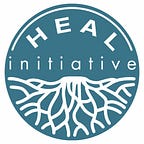What is the role of medical students during the COVID-19 surge?
By Brett Lewis & Kelsey C. Priest
We are in the midst of an unprecedented moment in the history of medical education: Match Day ceremonies canceled, clinical rotations interrupted, and licensing exam centers shut-down. As the anticipated surge on the health care system due to COVID-19 looms, some programs are asking fourth years who have met graduation requirements to consider starting residency early. New York University is offering early graduation to fourth-year medical students who are willing to start residency in April. They are following in the footsteps of Italy, in which 10,000 fourth-year medical students were advanced to graduation early — their skills desperately needed on the frontlines. However, with concern of limited personal protective equipment (PPE) and of compromising student safety, the vast majority of medical students across North America are sidelined following recommendations from the Association of American Medical Colleges (AAMC), which put out a notice on March 17 strongly supporting all medical schools to pause clinical rotations.
There are approximately 91,000 allopathic medical students and 30,000 osteopathic students who train in the U.S., and following cancellations, many of these students are generously stepping-up to contribute by providing child care, grocery delivery, dog walking, and PPE drives. But as our health care systems become increasingly burdened, and workers are asked to practice to the full scope of their craft, medical students, to date, are largely relegated to virtual classrooms. Third and fourth-year students have valuable skills in patient communication, clinical documentation, and health care system navigation. As frontline providers become increasingly overwhelmed with direct clinical care, students around the country are waiting in the wings to use their skills to support patients, communities, and systems.
Some medical schools are already enlisting students in their health care response. Einstein School of Medicine created an elective that allows medical students to staff a primary care call center, with an attending back-up at all times, providing check-ins for highly vulnerable patients who should not leave their homes. Students are calling these high-risk patients to assess their health status, mental health, and access to food and medications. Likewise, clinical medical students at Brown are supporting primary care providers and their local department of health by contacting patients with COVID-19 test results and contact tracing positive patients. Students at UCSD, Northwestern, and the University of Minnesota are writing hospital discharge summaries from home as virtual medical scribes. These are all low-risk clinical activities, essential to patient care and health care workflow, without direct patient-exposure.
These are unprecedented times, and there is now no doubt this struggle is going to last more than just a few weeks. Every day we are seeing additional burdens being placed on our health care system and individual workers. Everyone is being called to make sacrifices and put themselves in harm’s way to more or less a degree. Medical students and other health care trainees should be no exception. If we are to sustain this effort, we need to think about increasing our workforce, not limiting it. We are already thinking out of the box on how we deliver care. We clearly also need to think outside the box on how we engage the next generation.
Brett Lewis is a medical student and can be reached on Twitter @vidualofdust.
Kelsey C. Priest is a medical student and can be reached on Twitter @kelseycpriest.
Originally posted here on March 28, 2020 at KevinMD.com.
